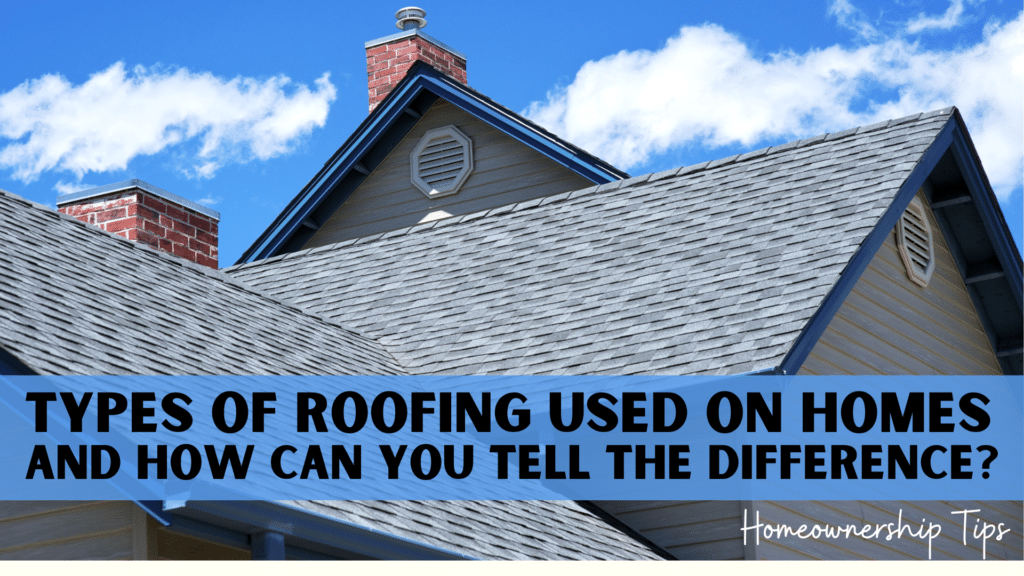
Understanding Roof Types: What They Tell You About a Home’s Age and Condition
When buying a home, most people focus on the layout, square footage, and neighborhood. But the roof—a critical part of the house—often gets overlooked. The type of roof can provide important clues about the home’s age, condition, and potential long-term maintenance costs. Let’s dig into how you, as a savvy homebuyer, can use roof types to gauge what you’re getting into before signing on the dotted line.
Why the Roof Matters
The roof serves as the first line of defense against weather, from brutal Canadian winters to humid summers. A well-maintained roof can last decades, but one that’s neglected can lead to costly problems like leaks, structural damage, and even mold.
Understanding roof types not only helps you estimate the home’s age and condition but can also inform your maintenance and future repair costs. Different materials wear down at different rates, and some are better suited to Canada’s climate than others. Let’s break down some common types you’ll encounter in Ontario and what they say about the home.
1. Asphalt Shingle Roofs: The Most Common Choice
What to Look For:
- Typical Lifespan: 15-30 years
- Key Indicators of Age: Curling, missing granules, and discoloration.
Asphalt shingles are the most common roofing material you’ll come across in residential real estate. They’re affordable, easy to install, and do a decent job of withstanding our changing climate. However, they don’t last forever.
If you see an asphalt roof with curled or missing shingles, granule loss (the sand-like texture on top), or dark streaks, it’s a sign the roof is nearing the end of its life. A patchy roof means immediate replacement may be necessary within the first few years of ownership. Knowing this in advance can help you negotiate the home’s price or request the seller fix the issue beforehand.
Pro Tip:
If the seller mentions the roof was replaced in the last 5-10 years, ask for warranty information—some shingles come with warranties that can be transferred to new owners.
2. Metal Roofs: Long-Lasting and Durable
What to Look For:
- Typical Lifespan: 40-70 years
- Key Indicators of Age: Rust, denting, and loosened fasteners.
Metal roofs are gaining popularity, especially in more modern or rural homes. Not only do they look sleek, but they’re highly durable and energy-efficient, reflecting sunlight in the summer to keep your home cool. These roofs can last twice as long as asphalt shingles but come at a higher upfront cost.
Signs of an aging metal roof include rust, particularly around the seams, and denting, which might occur from hail or debris. If you spot these, you’ll need to determine how extensive the damage is—metal roofs can often be repaired rather than fully replaced.
Pro Tip:
Ask about the type of metal used. Steel and aluminum are common, but premium materials like copper can last even longer and add more value.
3. Wood Shake Roofs: Rustic Charm but High Maintenance
What to Look For:
- Typical Lifespan: 20-40 years (with proper care)
- Key Indicators of Age: Cracking, warping, and moss growth.
Wood shake roofs are beautiful and often found on older, character homes. They offer natural insulation and a unique aesthetic that appeals to many buyers. However, they require consistent maintenance to last. Wood is susceptible to moisture, meaning it can crack, warp, or grow moss over time.
When evaluating a wood shake roof, look for any signs of rot or heavy moss growth. Darkened or soft wood is a sign of moisture damage, which can compromise the roof’s integrity. If you notice these issues, the roof may need immediate attention or replacement.
Pro Tip:
Wood shake roofs can be expensive to replace, so factor that into your long-term budgeting. Also, check the local fire codes—some areas discourage wood roofs due to fire risk.
4. Slate Roofs: A Luxury with Longevity
What to Look For:
- Typical Lifespan: 50-100+ years
- Key Indicators of Age: Cracks, broken slates, and slipping tiles.
Slate roofs are the epitome of durability and beauty. They’re fire-resistant, immune to rot, and can last over a century if properly maintained. These are most common on high-end, historic, or luxury homes and add significant value to the property.
However, slate is heavy and can sometimes crack or dislodge. If you notice slipping or cracked slates, repairs can be costly because you’ll likely need a specialist. But the good news is that slate is so durable that minor repairs can extend its life by decades.
Pro Tip:
Slate is a natural stone, so it’s not easy to match the exact look when replacing individual tiles. Always check with a professional before doing any DIY fixes.
5. Flat Roofs: Common on Modern or Urban Homes
What to Look For:
- Typical Lifespan: 10-30 years, depending on materials.
- Key Indicators of Age: Ponding water, cracks, and leaks around seams.
Flat roofs are common on modern, minimalist homes or urban properties. These roofs are typically made of materials like rubber, PVC, or built-up layers of tar and gravel. While flat roofs can give homes a sleek look and are easier to access, they’re more prone to leaks due to drainage issues.
If you see ponding water or notice cracks or seams that appear loose, the roof could be at risk for leaking. Repairs on flat roofs can be straightforward, but replacement costs vary widely depending on the material used.
Pro Tip:
Flat roofs tend to need more regular maintenance than pitched roofs. If you’re not up for yearly inspections or resealing, consider this before buying a home with a flat roof.
6. Tile Roofs: Mediterranean Vibes and Longevity
What to Look For:
- Typical Lifespan: 50-100 years
- Key Indicators of Age: Cracked tiles, moss growth, and sagging areas.
Tile roofs, typically made of clay or concrete, are less common in Ontario but can be found on custom or Mediterranean-style homes. They’re long-lasting, durable, and offer great insulation properties.
The biggest issues with tile roofs come from broken or cracked tiles, which can allow water to seep underneath and damage the underlayment. Moss or algae growth can also indicate moisture problems. However, individual tiles can usually be replaced without needing a full roof replacement, making this an attractive option for longevity.
Pro Tip:
Tiles are heavy, so ensure the home’s structure can support them, especially if it’s an older property.
What the Roof Tells You About Future Maintenance Costs
A home’s roof can be one of the biggest factors in determining how much you’ll need to invest in maintenance or repairs down the line. Asphalt and wood roofs will require more frequent replacements, while metal, tile, and slate roofs last significantly longer.
When touring homes, take a close look at the roof’s condition. Use it as a negotiation tool if it needs replacement soon. And if the roof is new or recently updated, that’s a great selling point for peace of mind.
Final Thoughts: Don’t Forget the Roof in Your Home Search
A house is more than just its curb appeal or square footage. The roof over your head is vital to your comfort and long-term investment. By understanding the type of roof a home has, you can better predict the maintenance it may need and negotiate accordingly.
Before you make your final decision, always consider a professional roof inspection. A little foresight on roof condition can save you thousands of dollars in future repairs and give you confidence in your home-buying decision.
Looking for more homebuying tips or guidance on how to assess a property? Let’s chat—I’m here to help you navigate every aspect of your real estate journey.
For other great articles specific to homeownership, click here and check out these articles also!
- Budgeting For Home Improvements
- The Tools That Every Homeowner Needs
- Rebates For Home Renovations and Repairs
If you’re thinking about buying, selling or investing in Durham Region or Toronto, let’s chat! I can be reached at 647-896.6584, by email at info@serenaholmesrealtor.com or by filling out this simple contact form. You can also kick off your search for Durham Region homes for sale by clicking here.
In addition, make sure we’re connected on social @serenaholmesrealtor and you’ve subscribed to my YouTube Channel. And, for other articles specific to real estate investing, click here.










